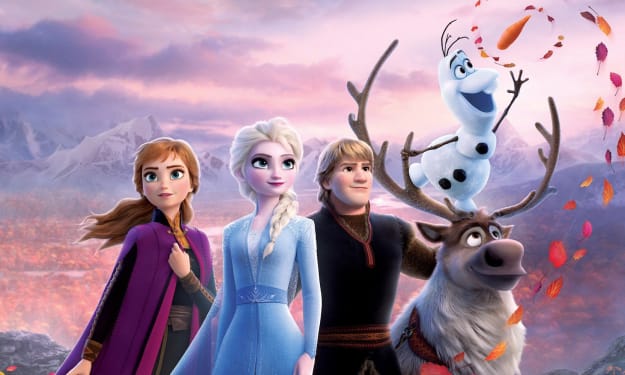
Through the examination of Joe Wright’s 2012 film adaptation, Anna Karenina and Sylvia Plath’s poetry, the idea of an individual’s struggle within the eye of society’s judgement is explored. Wright’s film delves into the life of imperial Russian aristocrat, Anna Karenina and her struggling love affair with Count Alexei Vronsky, which Wright cleverly unravels within the set of a traditional theatre stage. Wright develops the idea of societal darkness that is inflicted upon individuals through the judgements of what society considers a sin. Similarly, Plath’s confessional poetry contrastingly explores similar themes, as in her poem ‘Child’ she explores others protecting another’s innocence from the corruption induced into society. Additionally, Plath’s poem ‘Fever 103°’ questions the judgments given by society, as the idea of sin and purity are evaluated. Furthermore, ‘Lady Lazarath’ explores the consequences judgments from society can impact onto an individual as she confesses her struggles with suicide and depression through her confessional poetry.
Wright’s film and Sylvia Plath’s poem ‘child’ explores the idea of a mother’s struggle to shield children from the darkness implemented by the judgements created by society, positioning audiences to recognise the innocence within children. Wright utilises the symbolism of ducks as Dolly, within the medium shot refers to her children, as “little ducklings,” emphasising the purity of children. Similarly, Plath utilises the imagery of ducks, as the narrator wishes to “fill,” her child’s eyes “with colour and ducks.” Therefore, both Wright and Plath utilise ducks, as an animalistic symbol associated with the purity of children, to emphasise the mother’s wishes to prevent their children to struggle within the corruption created by society. Additionally, the non-diegetic lullaby music in the close-up shot of Anna displaying her motherly affection to her son Sergei, emphasises a calming tone symbolising the connection between mother-child, influencing audiences to sympathise for Anna’s struggle to protect her son. Contrastingly, Plath structures her poem into four quatrain stanzas, commonly used for children’s nursery rhymes creating a dream-like tone, symbolising her poem to ironically relate to a child’s story even though the content is intended for adults. Therefore, similar to Wright, Plath influences audiences to sympathise for the mother in her struggle to shelter her child. Furthermore, Wright positions Kitty to be portrayed as a child rather than a young adult, which is emphasised through the imagery within the dialogue description to be “of the heavens,” emphasising Kitty’s purity and innocence. Contrastingly, Plath utilises flower imagery as a metaphor describing the child as an “April snowdrop, [and] Indian pipe,” positioning audiences to visualise the purity and innocence of the child through the symbolism of the pure white flowers. Additionally, Wright emphasises Anna’s envy of Kitty’s innocence through Anna’s dialogue “oh to be your age again, surrounded by that blue mist,” influences audiences to recognise Anna’s unhappiness within her marriage and wishes like Kitty to have the naivety and innocence of youth. Furthermore, the imagery of the “blue mist,” emphasises the unknown future Kitty has, unlike Anna who feels trapped within her loveless marriage. Contrastingly, Plath continues the flower imagery in her third stanza as describing the child as a “stalk without wrinkle,” symbolising to audiences the child, like Kitty in Wright’s film, is yet to face the trials of life created by society. Therefore, both, Wright and Plath accentuate the idea of a mother’s attempt to protect their child’s innocence from society. Within Wright’s use of mise-en-scene, Anna places a black-veil over her face and turns away from her son, the costuming and body-language indicating to audiences her abandonment of her son in order to protect him. Whereas Plath accentuates her depression through the metaphorical imagery of “dark- ceiling without a sky,” as the mother strives for her child to not experience the darkness of her world. Anna Karenina and Sylvia Plath’s ‘child’ explores the nature of a mother struggle to protect their child from perils within society thus accentuating the innocence of children.
Wright’s Anna Karenina, and Sylvia Plath’s poem ‘Fever 103°,’ examines the ethical relation between purity and adultery, positioning audiences to consider the severity of judgments given by society. Wright positions audiences to evaluate Anna’s purity, as within her near-death experience she punctuates through dialogue she is “afraid of death,” influencing audiences to understand Anna’s fear which is emphasised through her body-langue, in the overhead shot of taking her husband’s hand begging him to “thank God,” in an attempt to free herself from the burden of her sin. Similarly, Plath utilises an extended metaphor as the narrator describes their fever, symbolising the idea of their sin, like an infection, to be burning away. Similarly, Plath emphasises the fear the narrator has of dying through the metaphor of “Isadora’s Scarves,” the tragic accident of a contemporary dance artist’s death as through imagery Plath describers her scarf being “anchor[ed] in the wheel,” choking her. Additionally, Wright explores Anna’s shame due to her acts of adultery that are ironically emphasised within the mise-en-scene through the use of white, a symbolism of purity, persuading audiences to believe in Anna’s pureness rather than her actions society conveys as shameful. Therefore, Wright influences audiences to question the judgements made by society as Anna pursues her passionate affair. Contrastingly, Plath utilises the rhetorical questions “Pure? What does it mean?” influencing audiences to evaluate what society defines as pure. Furthermore, Plath manipulates through the juxtaposition imagery of the “dull, fat Cerberus,” influencing audiences to view the powerful mythological three-headed dog who guards the gates of hell to be weak, as Plath emphasises hell does not affect the narrator as she envisions herself as pure unlike society. Wright positions audiences through a feminist perspective to view the discrimination towards the expectations of women’s purity, as through the dialogue Dolly comforts Anna as she wishes “she had done the same,” influencing audiences to be understanding of Dolly, as her husband too has affairs; however, unlike Anna, not outcasted by society. Contrastingly, through a feminist perspective, Plath explores the expectations of a women’s purity as through the use of brackets “(My selves dissolving, old whore petticoats),” is emphasised to audiences influencing the idea men are not as discriminated by society for impurity as to are women. Wright’s Anna Karenina, and Plath’s poem ‘Fever 103’ influences audiences to assess the judgments created by society’s perspective of the relationship between purity and adultery.
Wright’s Anna Karenina and Sylvia Plath’s poem ‘Lady Lazarath,’ investigates society’s judgements by expressing the emotional impact society has, leading individuals to suicide. Both Wright and Plath utilise motifs throughout their creative pieces, as Wright emphasises Anna’s descent to suicide as she becomes increasingly unaccepted by society. Anna’s descent is emphasised through the motif of the reoccurring train one of which she envisions within the medium shot of the mirror after her encounter with Vronsky. Whist Plath emphasises her struggle with suicide through the motif imagery inspired by the Jewish holocaust, as is seen within the metaphorical imagery of her face being, “a featureless, fine Jew line.” Moreover, through the use of colour Wright foreshadows Anna’s emotional struggles through the mise-en-scene with the dark shades of blues and reds within Anna’s costume pallet influencing audiences to recognise Anna’s emotional struggle through colour. Contrastingly, Plath utilises colour through the imagery “I rise with my red hair,” to emphasise at the end of her poem to the symbolism of her feeling liberated in death. Moreover, Wright’s emphases on Anna’s exposure in society’s gossip through the setting within a stage set, symbolising the idea her life is like a play, positioning audiences to witness Anna’s struggle in society. Similar through the descriptive language Plath utilises the metaphor to emphasise “the big striptease,” symbolising to audiences Plath’s feeling exposed to society. Furthermore, similar to Wright, Plath ironically utilises “theatrical” imagery, to emphasise to audiences the idea “Dying, is an art,” satirising the idea of suicide. Wright emphasises through the mise-en-scene use of flickering lights across Anna’s face, during the scene of her suicide to emphasise the idea of her internal struggle between what she wants and the expectations of society. Contrastingly Plath accuses society through the use of figurative langue as addresses her audience “You poke and stir” symbolising the idea society has abused her. Wright and Plath address the impacts society’s negative judgments can influence on an individual’s life, informing their audiences of the consequences.
Wright and Plath explore the struggles of surviving with the judgement created by the expectations within society and the influence it enforces onto individuals. Therefore, through encouraging audiences to evaluate the relations between purity and sin. Additionally, the idea if society should be allowed to evaluate an individual is questioned. Thus an understanding is presented to audiences of the consequences influenced by the judgments given by what in society’s eye considers a sin. Thus, the impact placed onto an individual is explored as the Wright and Plath address the struggle of suicidal thoughts. It is evident society’s judgements are harmful to individuals thus Plath and Wright encourage audiences to be careful on the criticism they place on others.






Comments
There are no comments for this story
Be the first to respond and start the conversation.